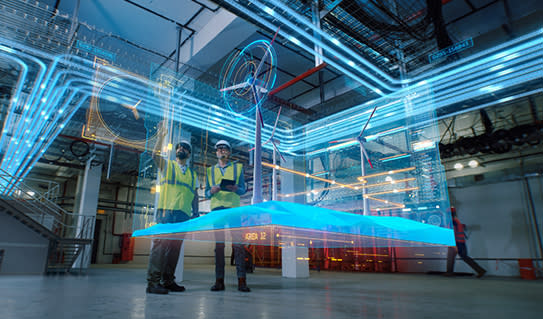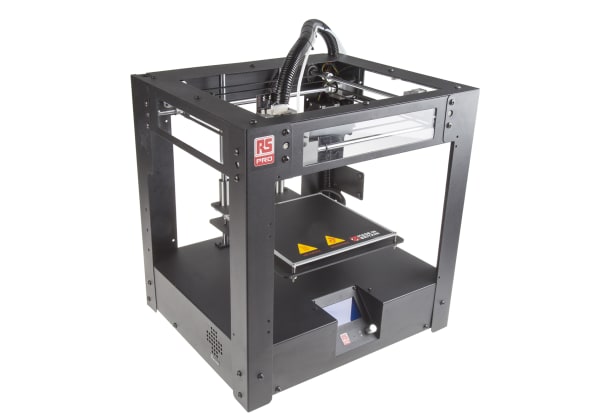- Published 16 Jun 2023
- Last Modified 26 Feb 2024
- 5 min
Automation and Robotics in Construction
This guide will explain the types of automation and robotics used in construction sectors and explore the impact they could have on future construction.

As the construction sector faces new challenges, including a skills shortage, increased efficiency and cost pressures, technologies like automation and robotics are becoming more important than ever.
The Growth of Construction Automation and Robotics in Construction
Industry 4.0 technologies have already been making an impact on sectors such as manufacturing, goods and medicine. In the next decade, automation and robotics will be helping construction and civil engineering overcome some of their most pressing obstacles.
With the robotics industry set to grow by 28% in the ten years up to 2030, advanced technologies related to the construction industry are also expected to be the fastest-growing segment. Indeed, a global survey by ABB found that 81% of construction businesses across the world will be investing in robotics and automation during the same period.
The same report also highlighted the challenges that the respondents will be hoping to address by integrating these technologies, including:
- Skills shortages (91%)
- Improving on-site health and safety (42%)
- Reducing environmental impact (42%)
In short, automation and robotics will be key elements that construction businesses will use to future-proof their operations.
Examples of Automation in Construction
As an early adopter of advanced technologies, the construction sector is already using a range of automation and robotics to improve their operations, including:
- Operational robots: whether it's laying a brick wall or demolishing a building, robots are increasingly being used to perform high-risk or difficult tasks. Rather than using human workers to complete jobs that hold inherent dangers (such as being at height or breaking down large materials) operational robots can take away that risk and get the job done safely and efficiently
- Exoskeletons: the skills of humans, particularly those in specialist construction roles, can’t be replicated by machines. However, exoskeletons provide support to these workers with a metal frame. This allows them to perform their work without restriction and with added help during demanding tasks, such as lifting heavy objects
- Self-driving vehicles: controlled through AI and GPS, these vehicles can move materials across a site or perform tasks autonomously without the need to rely on human drivers
- 3D printing: currently widely used in the prefabrication of materials, 3D printers are able to build components or even whole constructions from scratch, both on-site or in factories. This opens up the possibility for more customised designs and efficient production
- Intelligent safety and security systems: from keeping sites secure overnight to keeping workers and members of the public safe on an open site. Setting up a range of cameras, sensors and AI systems means construction areas can be accurately and remotely monitored
- Drones: collecting data for planning a new project, looking for potential hazards, and creating progress reports can all be performed effectively by airborne drones. As well as being controlled by human operators, some can be programmed to perform routes automatically, enabling the easy capture of real-time information

What’s the Impact of Automation or Robotics on Construction?
There is a range of challenges that the construction sector is facing. Automation and robotic technologies will be key to overcoming these.
Improved Safety
In the UK alone, 59,000 non-fatal work-related injuries were reported by construction workers in the Health and Safety Executive’s (HSE) latest report. These high injury rates mean the industry has gained a reputation for being inherently unsafe. As such, in order to solve the hiring gap many businesses are experiencing, this widespread perspective needs to be changed.
With robots taking on more dangerous tasks or supporting human workers to perform their jobs safely, the injury and fatality rates are set to improve. This doesn’t just make the industry more attractive to new workers but means lowering the risk for regular tasks such as handling heavy loads, working at height or completing demolitions.
Greater Efficiency
Though the introduction of technologies has had workers worried about jobs, the truth is that having automation and robotics perform certain tasks means construction employees can work more effectively. From using drones to map out sites to using an exoskeleton to lift heavy loads, technologies have a huge impact on improving the efficiency of their work.
Plus, rather than focusing on basic tasks, introducing computer-enabled machinery will mean human workers can focus on more skilled jobs. For companies, this means they can use their resources most effectively and gain a competitive advantage.
Reduced Costs
Although the initial investment is high, the long-term gains when it comes to completing projects more quickly make the returns worthwhile. From making the planning process more efficient to prefabricating materials more accurately and minimising human errors, technologies can minimise any delays and waste, making every project more cost-effective.

Increasing Sustainability
The reduction in waste doesn’t just benefit the cost-effectiveness of projects, but their sustainability too. With more accurate planning and the ability to 3D print materials or prefabricate them using 3D planning, projects will get only the materials they need, minimising excess.
Plus, improved surveying capabilities thanks to drones and AI systems mean surveyors will have a fuller picture of the environmental impact of projects, improving the accuracy of their reports, minimising delays and making operations greener.
Advanced Innovation
Technologies don’t just make operations faster but do so without sacrificing the quality of construction. With robots and 3D printers opening up whole new possibilities in terms of design, delivery and efficiency, all types of construction projects - from civil engineering to domestic architecture - can benefit from new innovations.
This doesn’t just benefit customers but gives businesses that adopt these technologies a significant competitive advantage.


